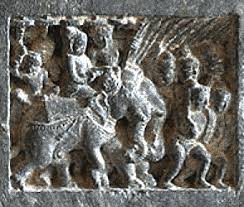Opposition during the Reigns
of Ahasuerus and Artakh’shasta
Ezra 4: 6-24
445 BC During the ministry of Nehemiah (see Bt – The Third Return).
Compiled by the Chronicler from the Ezra and Nehemiah memoirs
(see Ac – Ezra-Nehemiah from a Jewish Perspective: The Nehemiah Memoirs).
Reduced to its simplest form, these verses consist of a series of letters between the Jewish opposition and the Persian throne. The first letter to Ahasuerus is mentioned in passing with no response from the king recorded. But the second letter to Artakh’shasta is more detailed, specific names are given; Aramaic, the official language of the Persian Empire is used, and the king responds back with a letter of his own (see Aw – The Resumption of Work Under King Darius).71

From the initial opposition of trying to rebuild the Temple within six months of the Jew’s return (Ezra 4:4), to the opposition mentioned a decade-and-a-half later when Darius assumed the throne (see Af – Ezra-Nehemiah Chronology), to the opposition over trying to build the walls around Jerusalem over a hundred years later in the days of Artakh’shasta, trouble stalked the Jews at every step.
In describing the events in the books of Ezra and Nehemiah, the Chronicler, with the advantage of hindsight, looks back on the historical landscape and refers to the opposition placed in the way of the Jews. Thus, he rearranged the historical records at his disposal to support his main purpose, which was to show that Jewish opposition lasted a very long time. When discussing the problems of building the Temple in Ezra 4:1-5, it reminded him of similar problems with the rebuilding of the walls of Jerusalem about ninety years later, and so Ezra 4:6-23 has been inserted, almost parenthetically, before the narrative of the building of the Temple can once again be taken up in Ezra 4:24. So, here we temporarily flash-forward to 445 BC and the Third Return of Nehemiah.



Leave A Comment